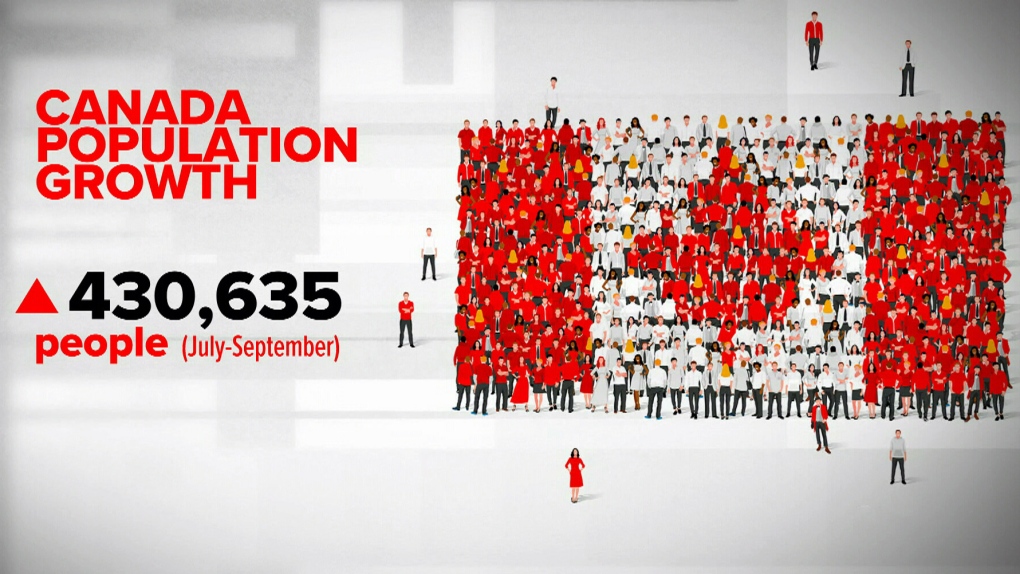With Donald Trump’s policy of imposing tariffs on imported cars and trucks into the US, and the fact that both Canada and Mexico were hit with 25% tariffs despite being members of USMCA/CUSMA, the Canadian auto industry (by which we mean manufacturing of vehicles, as well as parts for new vehicles) is under threat.
Meanwhile, several lobby groups representing business in Canada believe that a bad trade deal with the US is better than no deal. Trump wants the US to not import any cars from Canada, and some production has already been shifted to US plants.
Other nations hit by the Trump administration’s tariffs have negotiated deals that typically include a tariff rate of 15%, such as Japan and the EU nations. This is actually not that bad, given that the US has also imposed a 50% tariff on steel and aluminum. These deals are often seen as being vague or lacking in details, and are a stopgap to reduce tariffs by 10% until the US courts likely rule Trump’s tariffs as illegal.
Canada was one of the first countries where cars were manufactured. After WW2, Canada was the third largest car making country, after the US and UK. Of course, other countries like Germany and Japan eventually recovered and passed Canada, and then South Korea and China also became major car exporters.
Mexico has passed Canada by as well, even though it has no major auto manufacturer of its own, because of its cheap labour and access to the US. Trump has agreed to a 90-day deferral of some tariffs while the US and Mexico work out a deal, while Canada now faces 35% tariffs on many exports to the US other than autos, steel, and aluminum.
Currently, Canada has five major auto manufacturers making cars and trucks, namely General Motors, Ford, Toyota, Honda, and Stellantis. Stellantis makes Jeeps and other Chrysler brands, but it is essentially a European company that makes FIATs, Peugeots, and other European brands that came together through several mergers, including acquiring GM’s European brands.
There are fears that all five companies could close their Canadian auto plants, and Canada could end up much like Australia, which no longer has any auto manufacturing.
David Olive’s diagnosis misses the mark
Recently, The Toronto Star’s David Olive wrote an article titled “Trump could spell the death of Canadian auto production. Here’s Plan B” in which he proposes the nationalization of the auto makers’ Canadian operations.
Even with Canada imposing tariffs on US auto imports, Canada has not imposed similar tariffs on cars from Mexico, Europe, or Asia – though imports of EVs from China are effectively shut out of the market. Any attempt to continue making cars in Canada would still face mostly tariff-free competition from non-US imports, barring some change to laws affecting those imports, which in turn might mean retaliation or conflict over trade between Canada and those other countries.
Olive notes that in May, GM CEO Mary Barra publicly endorsed Trump’s auto tariffs, and as such we cannot expect the “Big 3” manufacturers to go to bat for Canada. Olive says, “Plan A is to hope for the best in Canada’s current trade negotiations with the U.S.” and then he outlines an alternative:

“Plan B, a Canadian auto sector that goes its own way, would become the leading supplier of trucks and other vehicles to all orders of government in Canada, from municipalities to the Canadian Armed Forces.
It would also make heavy equipment for the Canadian farming, construction, mining and forestry sectors, almost all of which is currently imported.
Plan B would likely require that the vehicle assembly industry be nationalized and protected with high tariffs against the likes of Caterpillar, Deere and Komatsu.
Plan B would rescue and repatriate a Canadian vehicle assembly industry that has been foreign owned for most of its 128-year history.
That protectionist, government-directed approach would be akin to how China became the world’s second-largest economy.
It would also conflict with Canada’s open market, private-sector ethos, however. Canadians would have to decide if it was a worthy enough cause to set a potentially undesirable precedent.”
I think David Olive misses the mark, though I do not reject government taking the lead or investing to keep the industry alive.
He notes that Canada produced about 1.3 million vehicles last year, a figure which has shrunk by 55% since 2000, when we produced 2.9 million. We have 8.3% of North American production, to America’s 66.2% and Mexico’s 25.5%. The U.S. also has excess vehicle assembly capacity of 1.6 million units, so remaining Canadian production could be replaced. Most cars built in Canada are exported to the US – around 80%.
If we assume that the five companies making cars in Canada can keep their plants open, it would be more like a return to the pre-Auto Pact days. In 2024, Canada made about 1.3 million cars, but we also bought about 1.9 million. We used to export more than we imported in the years under the 1965 Auto Pact with the US, but we usually had a deficit on auto parts for much of the time, even after 1965.
But if we currently export 80% of production to the US, that is because the plants are set up to make 1-2 models for all of North America, unlike the pre-1965 years when the most popular cars were built here (full size or smaller Chevys, Pontiacs, Dodges, and Fords). Low volume expensive cars, like Corvettes and Cadillacs, were imported from the US, while the plain Jane cars with smaller engines Canadians tended to buy were built here. With cheaper Canadian labour and tariffs on all imports, US branch plants made money here, and some cars were exported to places other than the US.
So, we have five automakers with plants here as a starting point – the companies from the US, Japan, and Europe (Stellantis is mostly Europe), and no car makers here from Korea or Germany.
The EV battery plants are probably dead regardless of what we do – with Trump cutting environmental laws and slow consumer acceptance of EVs, those plants may well be gone anyway. Frankly, I think they were bad deals. Those plants are likely only viable if it is impossible to relocate them to the US, which has 4.1% unemployment, or if their market is outside the US.
Nationalizing the auto factories in Canada makes little sense without the continuing involvement of the five corporations that own them now. The Canadian government needs the tooling and expertise of these companies, and these plants rely on parts imported from the US, Mexico, Asia, and/or Europe. Some sort of joint venture with the current owners and manufacturers might have to be the way to go – to keep plants running and to retool for more models.
What Canada does may depend on the companies making cars here.
For example, Honda makes the popular Civic and CR-V models here. According to some news reports, Honda is shifting some CR-V production to the US, but Honda has also said that their Canadian plant will take over US production that was exported to other countries.
Toyota has three plants in Ontario, but has not announced any changes. Two plants in Cambridge make RAV4s, plus the Lexus RX and NX, while a third in Woodstock makes the RAV4. The RAV4 is a big seller for Toyota, far more than the Lexis luxury branded vehicles. Toyota used to make Corollas in Canada, so Toyota’s Canadian capacity of 600,000 cars per year could be used to make more models or different models to serve Canada and markets other than the US – even if exports to the US were to totally end.
The problem for Canada is really with the traditional “Big 3” American companies, now sometimes called the “D3” (presumably, D stands for Domestic). Auto production by the D3 fell to 340,000 (annually) from 1.28 million in the past 10 years (to 2024).
GM used to make cars around the world, including in Europe or Australia, but now it is mainly making cars only in North America (US, Canada, Mexico), Korea, and China – as well as some operations in South America, Egypt, and Indonesia. Many of the vehicles GM sells in Canada are from Mexico and Korea, as well as the US. Aside from parts plants (engines mostly), GM mainly makes pickup trucks in Canada, but also the slow selling Brightdrop EV delivery van. Given the popularity of pickup trucks in Canada, the problem is mainly the plant in Ingersoll that makes the van.
Ford dropped plans to make EVs in Oakville, and is converting the plant to also make pickup trucks. Ford makes cars in Mexico and the US that are sold in Canada, but also makes cars in China and Europe, as well as in other markets. Ford used to have other plants in Canada, such as in St. Thomas.
The problem child of the D3 is Stellantis/Chrysler, which makes minivans and the Charger in Windsor. The massive Brampton plant, which used to make Challengers, Chargers, and 300s, is not currently making cars and its future is cloudy.
Meanwhile, Mexico has the most major companies building cars there, including GM, Ford, Stellantis, Nissan (Infiniti), Toyota, VW (including Audi), Hyundai, Mazda, Mercedes, BMW – as well as others with plants or plans to start manufacturing in Mexico.
There is an important economic concept known as “clustering”. Often, plants in the same industry locate near to each other, because of the benefits of proximity in getting the parts, skilled labour, materials, services, and so on. If Canada were to lose some plants, it could mean the loss of parts plants too, and otherwise make it harder for the remaining businesses to operate efficiently and profitably if supply lines are longer or one factory is isolated from others.
If globalization is breaking down, then it’s every country for itself
What if Canada were to make it a priority to keep auto manufacturing, particularly when so many companies are in the US and Mexico, but not in Canada? What if Canada was to impose tariffs or barriers on the US, but also on other countries that make cars we buy, but currently do not buy many – or any – of the vehicles we make?
If globalization is breaking down because of Trump, then it is every country for itself. To stand up to the US, we would need the co-operation of the EU and Japan, with Korea and Mexico as well, to keep plants open and to have some sort of tradable credits or rebates. The real question in the short term is what sort of deal Mexico does with the US – but Mexico has a 90-day reprieve from tariffs, and we do not.
Other than Stellantis, which has problems of its own outside of Canada, the auto manufacturing industry in Canada is not in as bad shape as many might assume. Honda and Toyota can likely keep making cars here, and Ford and GM’s pickup trucks are top sellers. While we would benefit from getting rid of the tariffs that Trump has imposed on autos, aluminum, and steel, even if we struck a deal with the US by making concessions, Trump has a history of breaking deals and is likely to come back and attack Canada’s economy again.
The real problem is this. If, as Trump says, factories assembling Hondas in Ontario and aluminum being smelted in Quebec (using their cheap electricity, which the US can’t match) are threats to US national security, then why the hell are we partners with the US in NORAD and NATO?If the US auto industry has to be protected for national security, then Canada has an even stronger case to do the same thing, given our smaller manufacturing sector and capability, and because we are at risk of totally losing the ability to make the things we need, as we did in WW2.
So far, Carney has caved on the carbon tax and the Digital Services Tax (DST). To match the popular acronym TACO (Trump Always Chickens Out), can Canadians start using CACO (Carney Always Chickens Out)?
Ottawa’s Plan A appears to be letting ourselves be bullied because Carney doesn’t want to risk Canada’s other exports under CUSMA. Doing so may buy Canada some time, but it will be hard to gain back what we have lost – both in terms of the deals with the US, and because the auto plants and other things may be gone forever.
Going back to the Toronto Star article, Olive’s Plan B is to have the government step in and nationalize auto production, rather than getting Trump to back down. This plan is defensive, and goes too far in relying on the government to step in and push aside the existing companies in a globalized industry with few corporations left after mergers or bankruptcies. It is not well thought out, since making autos is complex and means more than buying up manufacturing facilities (facilities that are branch plants and not full operating businesses with their own distribution networks).
During WW2, private manufacturing companies converted to wartime production to make tanks instead of locomotives, or military trucks instead of cars, but the federal government, under the direction of CD Howe, also created new corporations it owned to make planes like the Lancaster Bomber. These were built using designs under licence and expertise we lacked, but the UK or Britain had. When the war ended, the government owned factories were almost all closed and the machinery sold off, usually to be bought up by British or American corporations as branch plants.
Our auto industry can likely survive for a few years, but Mexico is increasing its share of auto production because of cheaper labour and the increasing ease with which companies can build cars there – though Canada’s workforce is better educated, and produces vehicles that usually beat out the US and Mexico for quality. Even with Trump gutting environmental rules and eliminating subsidies for “green” technology, EVs will eventually drop in cost and improve in practicality, and Canada could lose our plants and industry in the longer run if we are not careful – and if Trump is successful in killing off our ability to export cars to the US.
And then there is China. China is already dominating EV sales in Europe, and we are keeping them out of Canada for now. Could Canada work with China on autos? We could get an agreement setting up branch plants here to use key Chinese components, but it is hard to see China exporting cars from Ontario to other countries in the same way Honda and Toyota can.
Canada has cards in our deck, if we have the courage to play them
Elsewhere on Dominion Review, I wrote an opinion piece on Canada “going rogue” by breaking away from the US in NATO and NORAD, though not by becoming isolationist. Instead, we could work with others (or even the US) on an ad hoc basis on things like countering Russia in the Arctic, or build alliances without the US on matters like the war in Ukraine. But even if we build alliances and do more trade deals, we are unlikely to export to the EU or to other countries at the same level that we have exported to the US since the 1960s.
If the US eventually returns to a more normal administration, then we can rebuild what we can of our trading relationship – though maybe in such a way that we are not so vulnerable to US swings in leadership.
The irony is that Trump backed down to China to a large degree, because they threatened to withhold rare earths that the US needs. Canada has bargaining chips that Carney could play, but so far he seems unlikely to use them or even to hold them out as threats.
Trump himself raised the idea of linking Canadian foreign policy on Gaza to his trade and tariff policies. Since he raised this, why shouldn’t we link trade and tariffs to such things as NORAD and access to our air and waters?
Muddling through with our current approach will mean permanent economic losses to Canada. We have to play “dirty” if need be.
Canada also has to move beyond seeing ourselves as mainly exporters of commodities, natural resources, and energy. Trump is actually correct in seeing manufacturing as being important, but a Globe and Mail article by Doug Saunders titled “The triple contradiction of Trumponomics could crash the world economy” points out accurately that Trump’s overall strategy makes no sense. Trump wants to bring manufacturing jobs to the US, but he has also cut immigration while US unemployment is low, so there may not be a sufficient labour supply to fill these jobs. He wants lower interest rates, while he has also passed a bill that will drive US government fiscal deficits far higher due to tax cuts on the rich.
Canada’s population has grown from 30 million 25 years ago to over 41 million today. To prosper, Canada needs an economy that is diversified, less dependent on resource exports, and strong in manufacturing and high technology. Losing the auto industry would be a major setback, but muddling through with our current approach and not taking stronger actions to counter the Trump administration’s attacks on our economy would be a big mistake.
All content on this website is copyrighted, and cannot be republished or reproduced without permission.
Share this article!




The truth does not fear investigation.
You can help support Dominion Review!
Dominion Review is entirely funded by readers. I am proud to publish hard-hitting columns and in-depth journalism with no paywall, no government grants, and no deference to political correctness and prevailing orthodoxies. If you appreciate this publication and want to help it grow and provide novel and dissenting perspectives to more Canadians, consider subscribing on Patreon for $5/month.
- Riley Donovan, editor